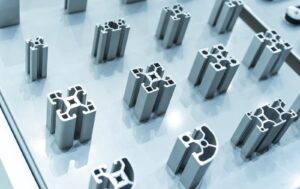The difference between CNC turning and CNC milling all comes down to which part moves—the metal or the machine—when shaping and removing metal on a workpiece. In other words, CNC turning machines turn the workpiece and cut with a single-point tool, while CNC milling machines turn the tool and cut with a multi-point tool. Easy, right? Both may be very similar concepts, but these processes themselves can be very complex without the right equipment.
As a leading manufacturer of precision machined products in Missouri, Roberson Machine Company understands the difference between the two and makes sure that the most appropriate process is used for not just faster parts production, but better and more accurate results every time.
Whether you need an initial prototype or a run of components that are consistently excellent, we deliver on every job. Read on to understand the difference between CNC turning and CNC milling in order to see which process is best for your project.
What is CNC Turning?
CNC turning is an intricate, rapid method of creating custom machinery using one of the oldest machine tools in the world, the “lathe.” A CNC lathe holds bars of material on a “chuck” and rotates them at a high RPM. A single-point cutting tool shaves away portions of the metal to create the desired end shape, which is typically round, tubular, or cylindrical. For example, turned parts can range from simple rings to complex curved components such as nautical drive shafts, decorative brass shoulder bolts, and even chess pieces.
CNC turning can be used to turn out thousands of components that are each identical, which means we can create large numbers of well-finished components in a relatively short space of time.
What is CNC Milling?
CNC milling is a process similar to drilling or cutting that removes material from a workpiece using a rotating multi-point cutting tool. Generally, your tool will be doing the rotating and moving while your workpiece stays in one spot.
CNC milling machines are controlled by either computerized controls or manual override. Computer programming allows the machine to make precise cuts, while the manual override allows a machine operator to speed up, slow down, or tweak the process if necessary. By cutting along a number of different axes, we can create complex components that allow for a variety of shapes, holes, and slots to be cut into the workpiece at many angles.
There are numerous examples of products that can be created using CNC milling processes including arms, linkages, pulleys, fixtures, and valves.
Which CNC Machining Service is Best?
That all depends on the project! Several factors can go into the decision, but there are a few general considerations:
CNC milling may be best for when:
- The part needs anything that may be angled (such as cuts or holes) or for secondary features ( such as grooves or indentations)
You want to conserve metal - You want to conserve metal
- The part requires many cuts to achieve that perfect fit for your application
- You want the get the part done right the first time
CNC turning may be best for when:
- The part is round
- You want each piece to conform to the same precise specifications in the shortest time possible
- You need larger volumes of parts with a more straightforward design
- You want free range of motion for the cutting tools to make designs
We may even choose a blended approach of turning and milling if you require a highly complex designed piece. This may also depend upon the specifications for each part of the design.
Contact Our Missouri CNC Machining Company For Your Next Project | Roberson Machine Company
As a leading provider of machining, turning, and milling services, we have a deep understanding on what our customers need for sustainable success. We are able to choose the right machining service to meet your production targets on time and within budget.
To tell us more about your project or to request a quote for CNC machining services in Missouri, contact Roberson Machine Company or call 573-646-3996.





